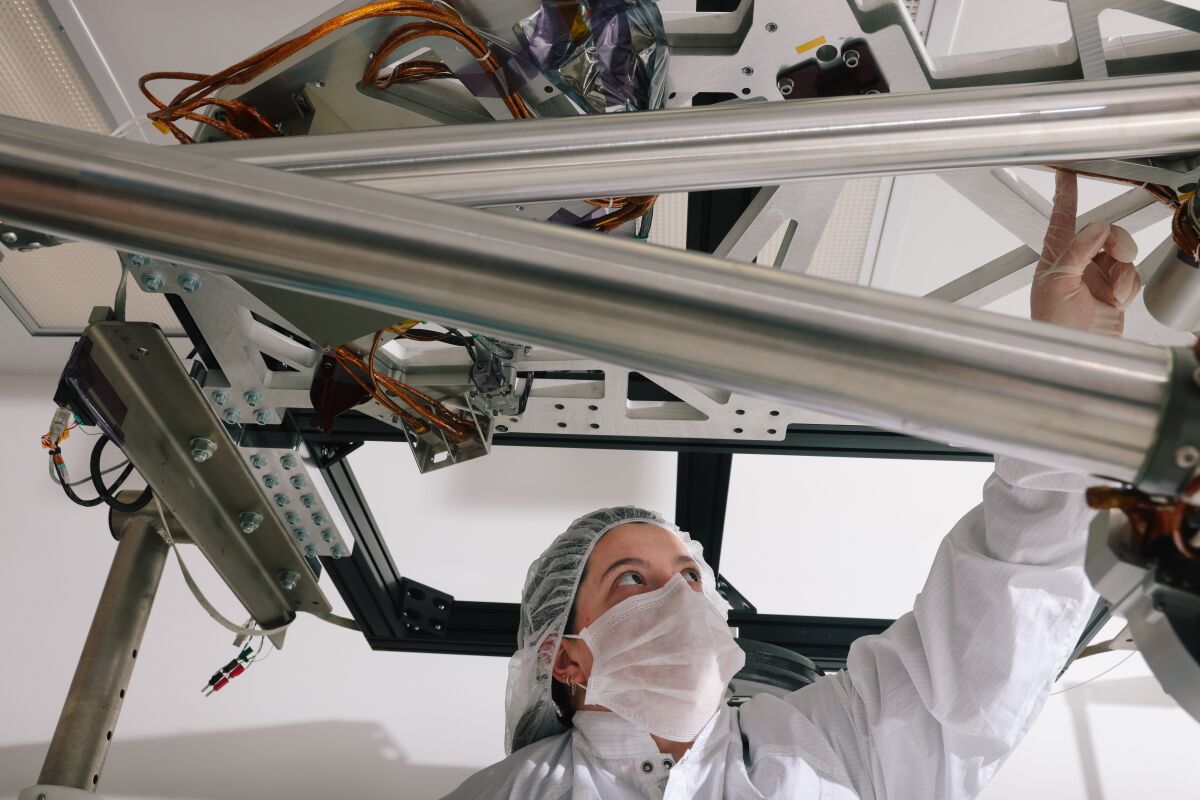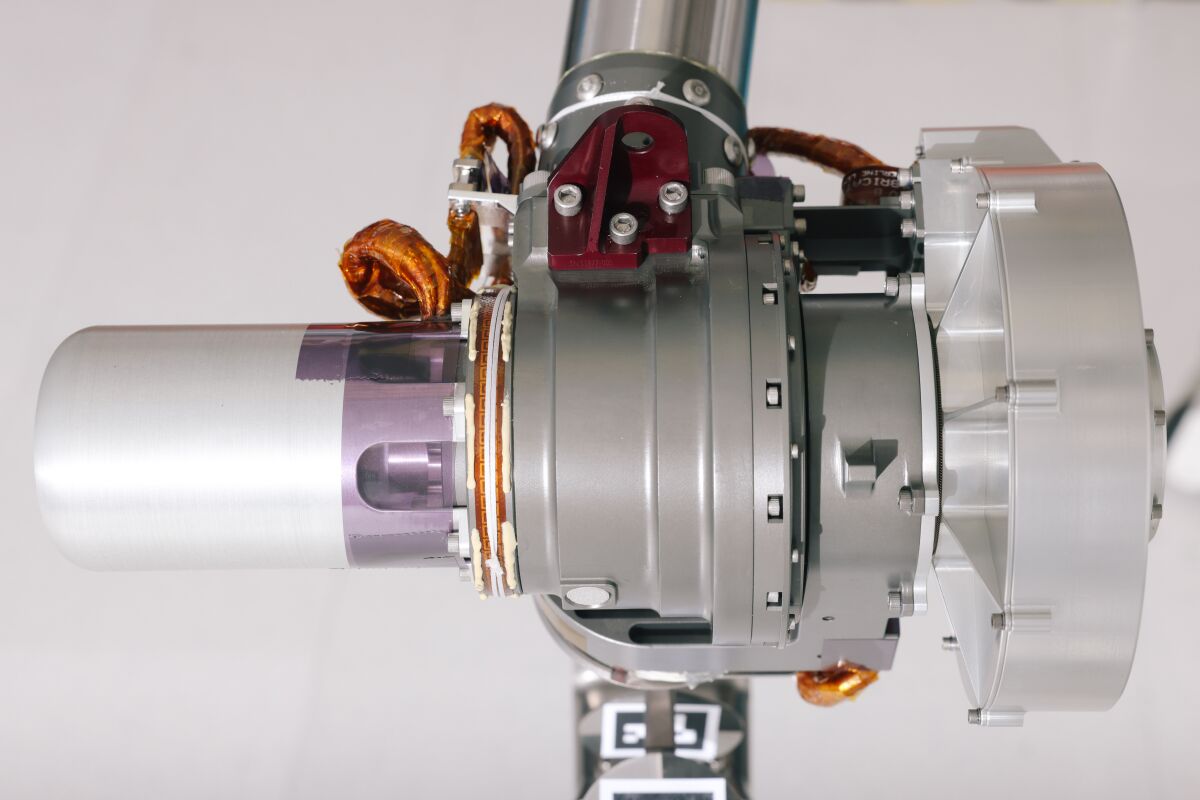Excessive chilly is cruel on equipment. Fluids thicken to ineffective goo. Rubber seals stiffen and crack.
The issues pile up because the temperature falls. Metallic turns into brittle, and wires contract. Batteries cease working, adhesives cease sticking and LCD screens go black as their liquid crystal freezes stable.
And that’s simply right here on Earth.
When NASA’s new lunar rover lands on the moon’s south pole subsequent 12 months, it can encounter a complete new sort of chilly.
Temperatures there hover round minus 280 levels Fahrenheit (minus 173 levels Celsius). Within the everlasting shadows of polar craters, it may well fall to minus 388 F (minus 233 C).
For context, Antarctica’s Vostok Station holds the file for the bottom temperature ever recorded on this planet: minus 128.6 F (minus 89.2 C), recorded July 21, 1983. A typical day on the moon is about 150 levels colder than the coldest it has ever been on Earth.
Earlier rovers for the moon and Mars — which can also be chilly, averaging minus 80 F — have been outfitted with built-in heaters that swap on at the beginning of the lunar or Martian day and take a number of hours to heat sufficient for the machines to start their each day duties.
That comes at a price of time and vitality, two valuable commodities on any house mission. However what if you happen to may construct a rover that didn’t want warm-up time?
“If you happen to’re capable of work longer hours in at some point, you’d be capable of get extra data,” stated Lacie Fradet, a mission engineer at Motiv House Programs in Pasadena, which is working with NASA’s Jet Propulsion Laboratory to make this potential. In the event that they reach constructing an arm that may function in extraordinarily chilly areas, “we will go locations we haven’t gone earlier than.”
Step one towards that imaginative and prescient is materializing in Motiv’s climate-controlled clear room: a modern robotic arm whose angles resemble these of a praying mantis.
The Chilly Operable Lunar Deployable Arm, or COLDArm, bears a putting resemblance to a praying mantis.
(Dania Maxwell / Los Angeles Occasions)
That is the Chilly Operable Lunar Deployable Arm, a robotic arm able to working within the chilly of the lunar poles. Motiv is constructing it utilizing elements equipped by JPL in La Cañada Flintridge. If COLDArm passes all testing right here on Earth, the following purpose for the mission is to safe a spot on NASA’s Business Lunar Payload Providers, a program that permits U.S. firms to ship expertise to the moon’s floor for testing or to conduct scientific experiments.
The 6.5-foot (2-meter) arm is just one piece of a future lunar rover, but it surely’s an important one. The arm is the first device for scooping up samples from the moon’s floor. If it fails, so does the mission.
Motiv beforehand constructed the robotic arm on Perseverance, the rover at the moment exploring Mars’ Jezero crater. The 7-foot-long arm holds such essential devices as SHERLOC, which searches for proof of previous microbial life, and the X-ray spectrometer often called PIXL.
If COLDArm proves profitable, it may supercharge the quantity of experimentation that may be carried out within the chillier areas of our photo voltaic system.
JPL has expertise constructing machines that may operate in Martian temperatures as chilly as minus 202 F (minus 130 Celsius), stated Ryan McCormick, the principal investigator for COLDArm.
“However getting even colder,” he stated, “is a giant problem.”

Ryan McCormick, JPL’s principal investigator for COLDArm, says designing a robotic arm system that may operate within the extraordinarily low temperatures of the moon’s south pole “is a giant problem.”
(Dania Maxwell / Los Angeles Occasions)
Many lubricants and adhesives that operate on Mars will degrade within the chilly of a lunar night time. Sure electronics that labored high-quality for the Mars rovers — which might make the most of the warmth trapped by the skinny Martian environment — received’t work on the moon both.
COLDArm is fabricated from bulk metallic glass, a category of metals whose atomic preparations extra carefully resembles that of glass, making them stronger and extra sturdy than metal or ceramic.

Undertaking engineer Lacie Fradet with COLDArm, which is fabricated from bulk metallic glass to enhance its operate in temperatures as little as minus 280 levels Fahrenheit.
(Dania Maxwell / Los Angeles Occasions)
Bulk metallic glass doesn’t require a moist lubricant at its joints. That’s essential, as a result of moist lubricants freeze stable at minus 94 F (minus 70 C) — a virtually tropical temperature in contrast with the chilliness of the lunar poles. Earlier rover arms have needed to be constructed with tiny heaters at every joint to maintain the lubricant at a pliable temperature. Bulk metallic glass makes that pointless, Fradet stated.
As well as, COLDArm’s motor controllers have been fitted with an up to date voltage converter that may operate in extraordinarily chilly environments with out the added bulk of cables or insulation, McCormick stated.
In March, the Motiv workforce disassembled the arm and examined its varied elements in a thermal vacuum set under 100 Kelvin, or roughly minus 175 C. (Excessive chilly has its personal temperature models, with zero Kelvin representing the purpose at which molecules cease transferring.)

A detailed-up of certainly one of COLDArm’s bulk metallic glass joints.
(Dania Maxwell / Los Angeles Occasions)
The entire elements functioned in each the acute chilly and in vibration testing designed to simulate launch situations, McCormick stated. The subsequent step is to reassemble the arm and be sure that it really works as a complete in these situations.
Including to the complexity is the truth that temperature capabilities in a totally totally different means on the moon than it does on Earth, stated JPL planetary scientist Laura Kerber. The moon has no air to redistribute warmth, so when gentle hits the moon’s floor, it will get tremendous sizzling — as much as 250 F on the equator. With out that gentle, it’s tremendous chilly.
Given the moon’s place relative to the solar, the interiors of craters at its south pole stay in fixed shadow. That makes them about as chilly and darkish as something within the photo voltaic system.
“In these completely shadowed areas, all they see is the chilly of house,” Kerber stated. “Engineering-wise, it’s so onerous to make one thing that may survive inside these actually, actually chilly, completely shadowed craters.”
That’s a serious subject for NASA’s Volatiles Investigating Polar Exploration Rover, higher often called VIPER, which is scheduled to land on the moon’s south pole in late 2024 to seek for water ice.
The strongest hints of water on the moon are within the deepest-shadowed areas. These locations are too chilly for VIPER, however it can skirt round them and accumulate samples from the encompassing space, the place the ideas of water are weaker however nonetheless vital.
Navigating the moon’s temperature extremes has been a problem for the reason that earliest lunar missions. That’s a giant a part of the explanation Neil Armstrong and Buzz Aldrin flew 240,000 miles for a comparatively brief wander round their spacecraft: It was just too sizzling at Apollo 11’s touchdown web site within the Sea of Tranquility to go any farther.
“We had been working in a near-perfect vacuum, with the temperature properly above 200 levels Fahrenheit,” Neil Armstrong informed NPR in 2010. “NASA officers restricted our floor working time to 2¾ hours on that first floor exploration to guarantee that we might not expire of hyperthermia.”

